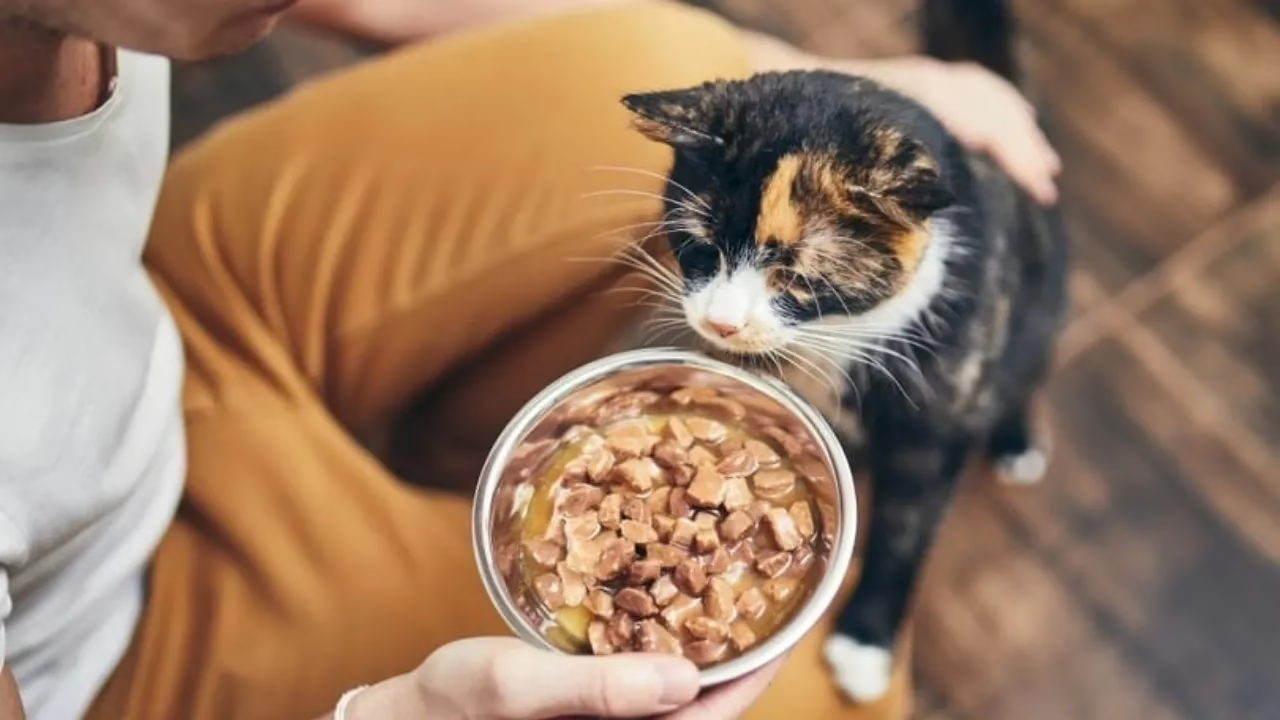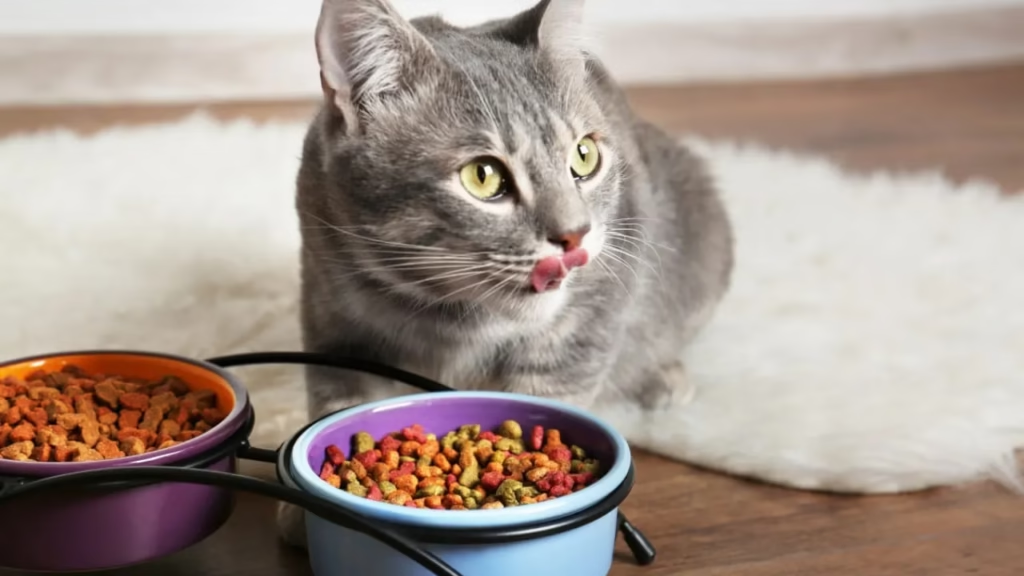Cats are cherished companions, and as pet lovers, we want to give them the best nutrition possible. In 2025, homemade cat food recipes are gaining popularity for their fresh ingredients and tailored nutrition. Making food at home lets you control quality, avoid fillers, and cater to your cat’s unique tastes or dietary needs. This guide shares easy, vet-approved cat food recipes, nutritional tips, feeding advice, FAQs, and practical steps to ensure your feline thrives on homemade recipes for cats. Let’s dive into creating delicious, healthy meals your cat will love!
Nutritional Needs for Homemade Cat Food
Cats are obligate carnivores, meaning their diet must center on animal-based proteins. A balanced homemade cat food recipe should include 30-40% protein from sources like chicken, turkey, or fish to support muscle health and energy. Fats, around 15-20% of the diet, from fish oil or chicken fat, promote a shiny coat and provide energy. Omega-3 fatty acids are especially helpful for skin and heart health.
Carbohydrates should be minimal, as cats don’t need much. Small amounts of fiber from vegetables like pumpkin or carrots aid digestion and help with hairballs. Essential nutrients like taurine (crucial for heart and eye health), vitamins A and D, and minerals like calcium and phosphorus are non-negotiable. Taurine, found in meat and fish, must be included, as cats can’t produce it themselves. Adult cats need about 20 calories per pound of body weight daily, kittens require 200-300 calories, and seniors need slightly less with joint-supporting nutrients.
Always consult a vet before switching to homemade recipes for cats to ensure nutritional balance. Adding a vet-approved supplement, like a feline multivitamin, can fill any gaps. Use AAFCO guidelines as a reference to meet your cat’s needs, keeping them healthy and purring.
Top Homemade Cat Food Recipes for 2025
These cat food recipes are simple, use fresh ingredients, and are designed to appeal to your cat’s taste buds while meeting nutritional needs. Each includes prep tips and storage advice. Always check with your vet for your cat’s specific dietary requirements.
- Chicken and Pumpkin Delight
A high-protein, fiber-rich meal perfect for digestion and weight control.
Ingredients (makes ~4 servings for a 10-lb cat):- 1 cup cooked, boneless chicken breast (shredded)
- 1/4 cup pureed pumpkin (canned, no sugar)
- 1 tbsp fish oil (for omega-3s)
- 1/2 tsp taurine powder (vet-approved supplement)
- 1/4 tsp calcium carbonate (or ground eggshell powder)
Instructions:
- Cook chicken thoroughly, shred, and cool.
- Mix with pumpkin, fish oil, taurine, and calcium in a bowl.
- Blend lightly for a pate-like texture or serve chunky if your cat prefers.
- Divide into portions (about 1/4 cup per meal for a 10-lb cat).
Pros: Easy to digest, supports urinary health, and appeals to picky eaters.
Cons: Requires taurine and calcium supplements to ensure balance.
Storage: Refrigerate for up to 3 days or freeze in portions for 1 month.
- Salmon and Sweet Potato Feast
A nutrient-packed recipe with omega-rich fish for coat health.
Ingredients (makes ~4 servings):- 1 cup cooked, deboned salmon (wild-caught, no salt)
- 1/4 cup mashed sweet potato (no additives)
- 1 tbsp olive oil
- 1/2 tsp taurine powder
- 1/4 tsp calcium carbonate
Instructions:
- Bake or steam salmon, remove bones, and flake.
- Mix with mashed sweet potato, olive oil, taurine, and calcium.
- Serve in small portions (1/4 cup per meal for a 10-lb cat).
Pros: High in omega-3s, great for skin and coat; grain-free for sensitive cats.
Cons: Salmon can be pricier; strong smell may linger.
Storage: Refrigerate for 3 days or freeze for 1 month.
- Turkey and Carrot Pate
A lean protein option with veggies for fiber and hydration.
Ingredients (makes ~4 servings):- 1 cup ground turkey (cooked, no seasoning)
- 1/4 cup finely grated carrots (steamed)
- 1 tbsp chicken fat or fish oil
- 1/2 tsp taurine powder
- 1/4 tsp calcium carbonate
Instructions:
- Cook turkey thoroughly and cool.
- Blend turkey, steamed carrots, fat, taurine, and calcium until smooth.
- Serve 1/4 cup per meal for a 10-lb cat.
Pros: Budget-friendly, supports digestion, and easy to prepare in bulk.
Cons: Requires blending for pate texture; carrots may not suit all cats.
Storage: Refrigerate for 3 days or freeze for 1 month.
- Beef and Spinach Mix
A hearty recipe for cats who love red meat.
Ingredients (makes ~4 servings):- 1 cup cooked, lean ground beef (no seasoning)
- 1/4 cup steamed, chopped spinach
- 1 tbsp fish oil
- 1/2 tsp taurine powder
- 1/4 tsp calcium carbonate
Instructions:
- Cook beef until fully done, drain excess fat, and cool.
- Mix with spinach, fish oil, taurine, and calcium.
- Serve in 1/4 cup portions for a 10-lb cat.
Pros: High protein, iron-rich from spinach; great for active cats.
Cons: Beef can be rich; not ideal for cats with kidney issues.
Storage: Refrigerate for 3 days or freeze for 1 month.
These homemade recipes for cats are vet-inspired and customizable, but always verify with a professional to ensure they meet your cat’s needs.
Feeding Guide for Homemade Cat Food
A consistent feeding schedule prevents overfeeding and ensures nutritional balance. Adjust portions based on your cat’s weight, age, and activity level, and consult your vet. Most adult cats weigh 8-12 pounds.
- Kittens (8-12 Weeks): Feed 3-4 small meals daily, about 1/4 to 1/2 cup total of kitten-friendly recipes (higher calories, soft texture).
- Kittens (3-6 Months): Maintain 3 meals, totaling 3/4 to 1 cup daily. Include extra protein and taurine for growth.
- Adolescents (6-12 Months): Transition to 2-3 meals, about 1/2 to 3/4 cup daily. Watch for weight gain as growth slows.
- Adults (1-7 Years): Two meals daily, 1/3 to 1/2 cup per meal (about 200-250 calories total). Ensure high moisture for urinary health.
- Seniors (8+ Years): Two meals, 1/4 to 1/3 cup per meal. Use softer textures and add joint-supporting supplements if needed.
Never free-feed homemade food, as it spoils quickly. Provide fresh water daily, and transition to homemade recipes over 7-10 days to avoid digestive upset. Always cook meat thoroughly to prevent bacterial risks.
FAQs About Homemade Cat Food Recipes
Here are answers to common questions about cat food recipes, perfect for pet lovers exploring homemade options.
- Is homemade cat food safe?
Yes, if balanced with protein, taurine, and supplements like calcium. Consult a vet to ensure nutritional completeness and safe preparation. - Can I use raw meat in cat food recipes?
Raw diets carry bacterial risks (e.g., salmonella). Cooked meat is safer unless you follow strict vet-guided raw feeding protocols. - How do I ensure my cat gets enough taurine?
Use taurine-rich meats like chicken or fish, and add vet-approved taurine powder to recipes, as cats can’t synthesize it. - Can I add human foods like rice or potatoes?
Small amounts of veggies like carrots or pumpkin are fine for fiber, but avoid high-carb foods like rice, as cats don’t need them. - How do I store homemade cat food?
Refrigerate for up to 3 days in airtight containers or freeze in portioned containers for up to 1 month. Thaw safely before serving.
Conclusion: Actionable Tips for Homemade Cat Food Success
Creating homemade cat food recipes your cat will love is a rewarding way to ensure fresh, tailored nutrition. Recipes like Chicken and Pumpkin Delight or Salmon and Sweet Potato Feast offer high protein and flavor, keeping your cat healthy and satisfied. With careful planning and vet guidance, homemade recipes for cats can be a game-changer.
Actionable tips: Consult your vet before starting; invest in a kitchen scale for precise portions; buy fresh, high-quality ingredients; add a feline multivitamin if needed; and rotate recipes to keep meals exciting. Store food safely and check your cat’s weight monthly to adjust portions. Try one of these cat food recipes today—your feline friend will purr with joy!


